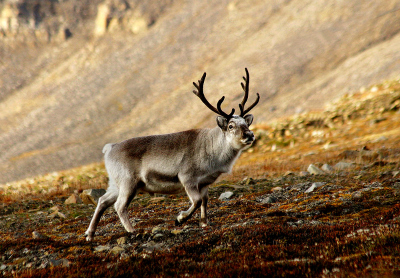No matter which winter holiday you celebrate, I wish you the very best of the season. For those raised in the Santa Claus tradition, here are some festive facts about reindeer!
1) Reindeer and caribou are the same species, Rangifer tarandus. Some people use the common name “reindeer” for the European subspecies, and “caribou” for the North American subspecies. Others prefer to use “reindeer” for domestic herds, saving “caribou” for wild herds. For our holiday purposes, I will stick with reindeer!
2) Yes, there ARE domestic herds! Reindeer herding has been practiced by Indigenous peoples across Europe and Asia for thousands of years, and now occurs in Alaska, too. Reindeerherding.org is a fantastic resource if you want to know more about these peoples and their cultures.
3) Recent research suggests that the Saami, one of the Indigenous herding peoples, have more words for snow and ice than the Inuit. This is because, in addition to the words referring to snow and ice themselves, they have an additional vocabulary that references how snow and ice will affect the safety and nutrition of the herds that are central to their culture and survival.
4) Reindeer are the only deer species in which both males and females have antlers. They drop and regrow them every year.
5) Reindeer can survive temperatures as low as -50C without shivering or increasing their metabolic rate to raise their body heat.
6) Reindeer have oleic acid in the marrow of their leg bones. This acid acts as an antifreeze, preventing frostbite.
7) In North America, reindeer live in two major habitat types – the barren grounds (tundra) and the boreal forest. Most populations of forest reindeer, commonly known as “woodland caribou” are threatened or endangered in Canada, due to habitat loss and increased predation.
8) Woodland reindeer depend on old growth forests, habitats that have existed long enough for lichens to grow. They prefer ground lichens (“reindeer moss”), but will also eat arboreal (tree-dwelling) species like horse hair and witch’s hair lichens, when ice covers the ground.
9) Climate change has increased the chances of alternating snow/rain events, or freeze/thaw cycles, that cause ice to build up on the ground. These “lock outs” prevent reindeer from digging down to their food – in bad years, both domestic and wild herds suffer from starvation.
10) Lichens contain usinic acid, which protects them against UV radiation. It also makes them unpalatable and difficult for most herbivores to digest. However, recent research shows that reindeer have a special gut bacterium, Eubacterium rangiferina, that breaks down usinic acid, allowing them to digest this unusual food. In some cultures, partially-digested lichen from reindeer stomaches is considered a delicacy. Consider adding that to your holiday feast!
Happy Holidays! Come back in 2019, when I hope to (finally!) resume a regular posting schedule.

re#7 – barren-grounds, boreal forest, and mountains – don’t forget the mountain woodland caribou!
Fun post LE – I hope that we have caribou/reindeer around in another 100, 200, 300 years from now!
Ho ho ho!!!
Alasdair
How could I forget mountain caribou! Thank you.